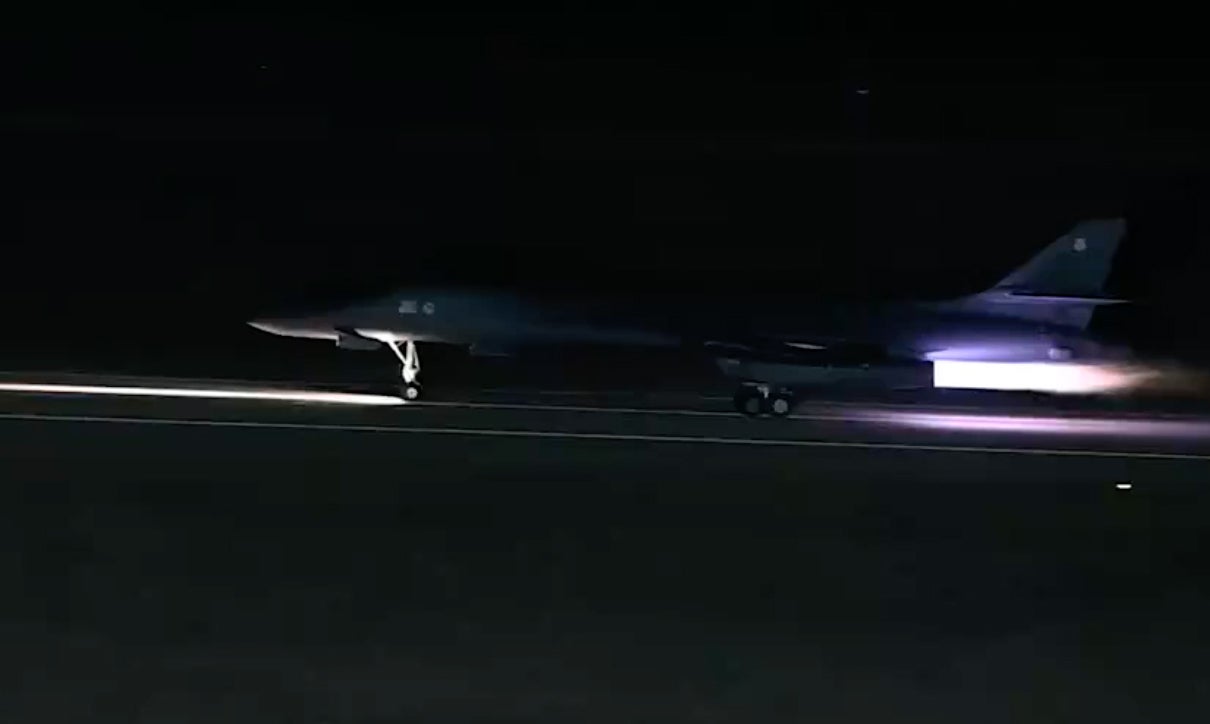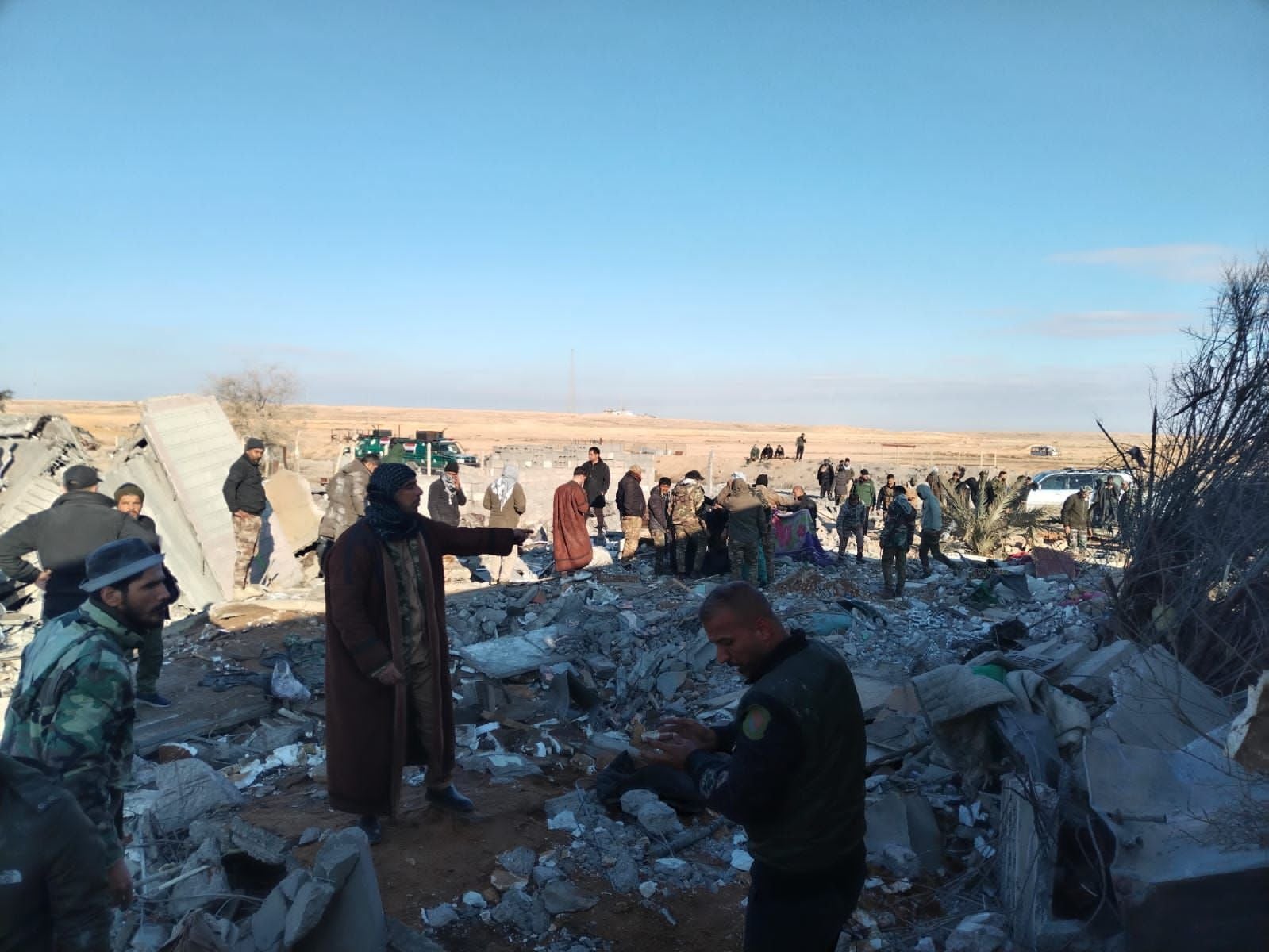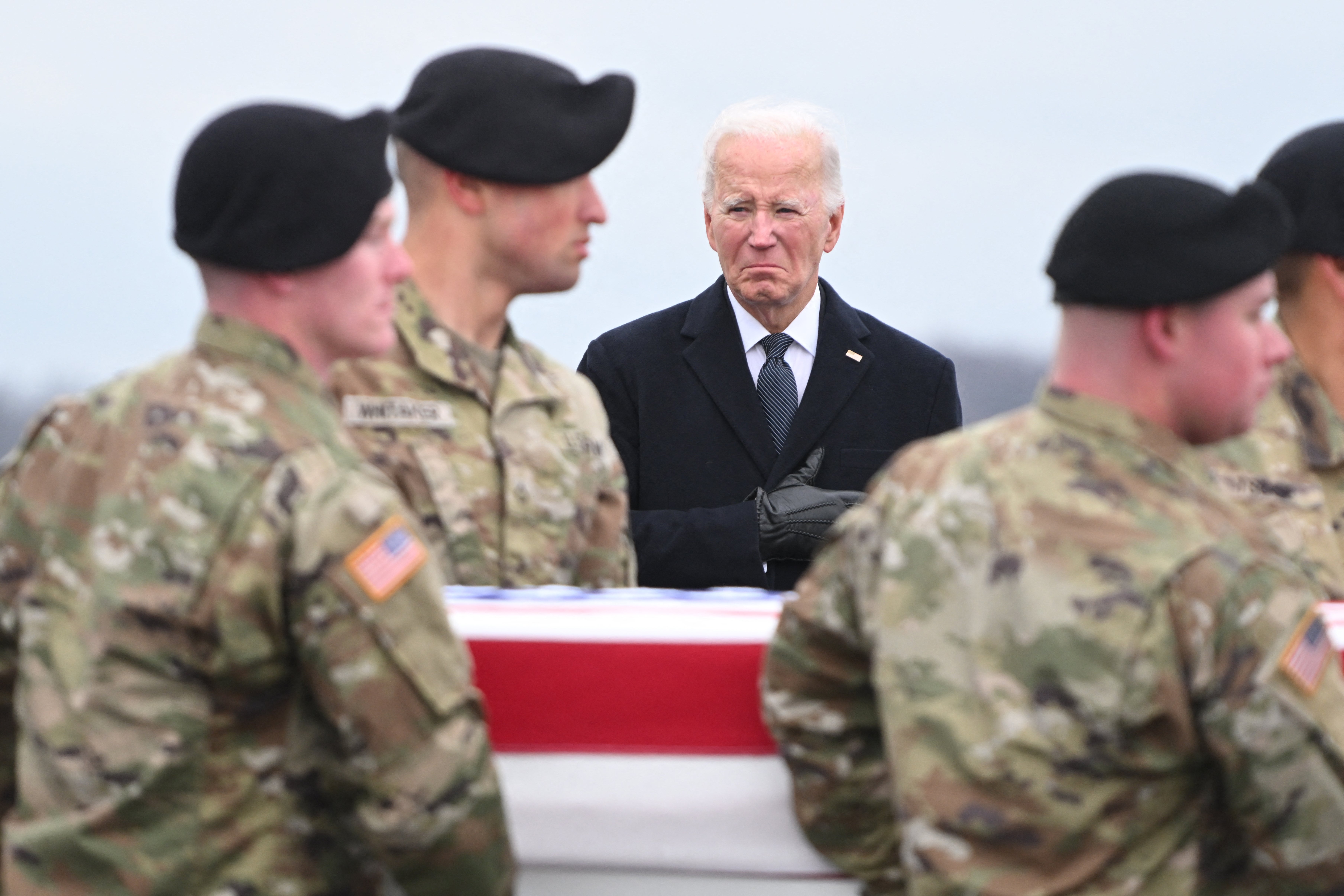Everything we know about the US strikes on Iranian targets in Syria and Iraq
Defence official says all airikes were conducted only by US warplanes
The US military on Friday struck Iran-backed militants and the Iranian Revolutionary Guard in Iraq and Syria in retaliation for a drone strike that killed three American troops in Jordan.
The US Central Command said American forces struck more than 85 targets at seven locations in both Middle Eastern countries using bombers and precision munitions, just hours after president Joe Biden received the remains of the three service members.
The US strikes appeared to stop short of directly targeting Iran or senior leaders of the Revolutionary Guard Quds Force within its borders in an effort to prevent the conflict from escalating further.
Iran has denied its involvement in the attack on American troops in Jordan.
"Our response began today. It will continue at times and places of our choosing," Mr Biden said in a statement following Republican backlash over what they described as delayed action.
"Let all those who might seek to do us harm know this: If you harm an American, we will respond," he added.
National Security Council spokesman John Kirby said Baghdad was informed ahead of the strikes and the targets "were carefully selected to avoid civilian casualties".
Iraq condemned the strikes as an attack on its sovereignty and warned of “dire consequences” for the region.
Where did the US strike?
The US military hit more than 85 individual targets in seven locations – four in Syria and three in Iraq. The strikes took place over about 30 minutes, Lt Gen Douglas Sims, the director of the joint staff, said.
The military struck targets in Iraq's remote western Al Anbar province bordering Syria, located 250 miles from Baghdad.

Among the targets were missile warehouses in the border city of al-Qaim and the town of Akashat in the middle of the Anbar desert, which houses a key base for Iran-backed militants, NPR reported.
The Imam Ali base operated by an Iran-backed militia near the city of Abu Kamal was also targeted in the attack.
The strikes across both countries included command and control operations, intelligence centres, rocket stores, missiles, unmanned vehicle storage and supply chain facilities, officials said.

They largely targeted the Quds Force, the foreign espionage and paramilitary arm of the Revolutionary Guards that heavily influences its allied militia across the Middle East, from Lebanon to Iraq and Yemen to Syria.
Let Gen Sims said attacks appeared to be successful, triggering large secondary explosions as the bombs hit militant weaponry, though it was not clear if any militants were killed.
The UK-based Syrian Observatory for Human Rights said that 18 militants were killed in the Syria strikes.

What weapons were used by US?
US Central Command said the assault involved more than 125 precision munitions, and that they were delivered by numerous aircraft, including two long-range B-1 bombers flown from the US.
All the airstrikes were conducted by US warplanes and not navy vessels, a defence official said.
Let Gen Sims said the strikes were undertaken knowing that there would likely be casualties among those in the facilities. He added that the weather was a key factor in the timing of the operation, with clear visibility providing the best chance of avoiding civilian casualties.
How have Iraq and Syria responded?
Iraqi army spokesperson Yahya Rasool said the strikes "constitute a violation of Iraqi sovereignty and undermine the efforts of the Iraqi government, posing a threat that will pull Iraq and the region to undesirable consequences".
"The outcomes will have severe implications on the security and stability in Iraq and the surrounding region.”
The Syrian defence ministry called the strikes "blatant air aggression" that led to a number of civilians and soldiers being killed and others being wounded and some significant damage to public and private property.
"Occupying parts of Syrian lands by American forces cannot continue ... the Syrian army affirms continuing its war against terrorism until it is eliminated and is determined to liberate the entire Syrian territories from terrorism and occupation," the ministry said in a statement on Saturday.
Washington has blamed the Islamic Resistance in Iraq, a broad coalition of Iran-backed militias, for the attack in Jordan, but hasn’t narrowed it down to a specific group. Kataib Hezbollah, a top suspect, announced on Tuesday it would pause attacks on US forces.
Join our commenting forum
Join thought-provoking conversations, follow other Independent readers and see their replies
Comments
Bookmark popover
Removed from bookmarks